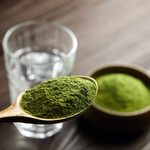Key Ingredients: Carrots
In the June 2009 issue of Reader’s Digest, our culinary experts Bonnie Stern and Fran Berkoff bring you some great recipes and nutritional tips for healthy home cooking based on one key ingredient. June’s key ingredient: Carrots!
When Bugs Bunny stood chewing on his carrot, saying “What’s up, doc?” he was certainly on to something. Carrots are full of nutrition; they may, in fact, help keep the doctor away.
Root of the Vegetable
Carrots go a long way back in history and are believed to have been native to the part of Asia we now know as Afghanistan. The carrot was probably being cultivated, as well as being harvested wild, before the time of Christ. In its wild state, it’s known as Queen Anne’s lace. Today, carrots are available all year long. They’re one of the most popular vegetables—and one of the most versatile.
Serving Suggestions
Carrots can be used in spreads and dips, or used to dip into spreads and dips. Carrot soups can be chunky or smooth, spicy or sweet, hot or cold. Side dishes made with carrots can be roasted, sautéed or mashed, and carrots in salads can be sliced, shredded or juliennes. And even for dessert, there’s carrot cake.
Buying, Storing and Preparing
When you buy carrots, the thin young bunches with the greens still on are usually the sweetest, but large organic carrots are good, too. “Baby carrots”—equal-sized and packaged in plastic bags—are not a different kind of carrot, they’re simply cut from full-sized carrots and they don’t usually have the best flavour and they can be coated with preservatives.
Look for firm, crisp and smooth carrots with rich colour and no blemishes. The deeper the orange colour, the more beta carotene in the carrot. Deep-green “shoulders” just below the top of a carrot can mean a bitter flavour, so check before you buy.
If you get carrots with the greens attached, make sure the leaves are bright-green, not dry or yellowish. Once home, remove the leafy green tops: They can draw moisture and vitamins from the edible root.
If stored properly, carrots will maintain their freshness and nutritional value for up to three weeks. Store them either in a plastic bag or wrapped in a damp tea towel in the crisper or the coolest part of the refrigerator. For longer periods, store carrots in a cool and moist space such as a root cellar.
Before eating carrots or using them in recipes, scrub them to get rid of the dirt in their little creases. For quick snacks, cut them up and keep them in the fridge in water or wrapped in a damp tea towel.
Keep the Goodness
There are many nutrients just below the surface of a carrot, so don’t peel the skin. Instead, rinse and scrub carrots with a vegetable brush, or scrape their surface lightly. Since “carotenoids”—nutritious plant chemicals found in carrots—are fat-soluble, the body best absorbs them in the presence of a little fat or oil. If you prefer your carrots raw, try serving them with a dip that contains a small amount of fat.
Bonnie Stern has been teaching people to have fun in the kitchen, to eat more healthfully and to nourish their families since she started her cooking school in 1973.
Fran Berkoff is a consulting dietitian/nutritionist in Toronto, as well as a columnist for newspapers and magazines, and co-author or several books.



